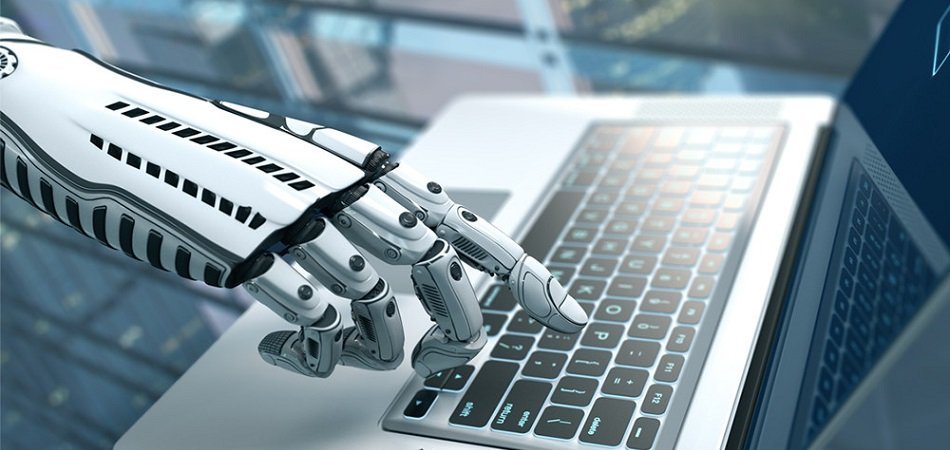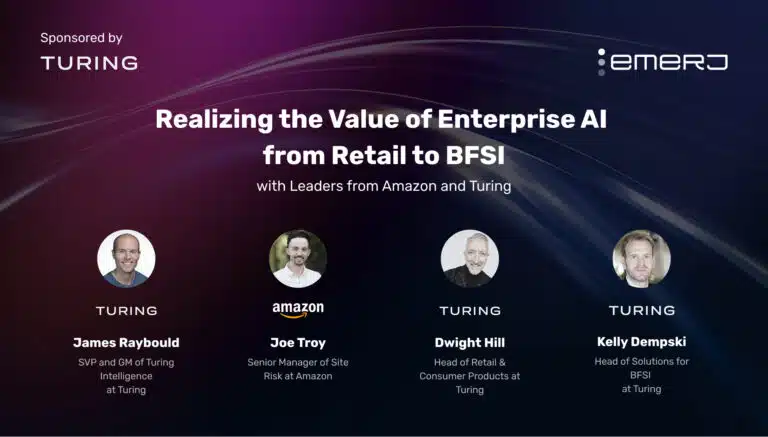Much of the artificial intelligence and automation discussion going on in the enterprise recently involves something that, in most cases, actually isn’t artificial intelligence at all: robotic process automation, or RPA.
RPA is on the lips of many curious business leaders that have heard about how it may now be possible to automate rote processes in business functions such as customer service and accounting.
In turn, RPA vendors are keen to make it seem like their software are intelligent or “cognitive,” that they can automate human decision-making processes in the way that AI can. These vendors in many cases all but say their software is artificial intelligence or machine learning, and some even do when in fact their software is nothing of the sort.
This article serves to provide business leaders with an accurate definition of what robotic process automation is and what it is not, pulling in expertise from PhDs in artificial intelligence and examples of RPA use-cases that show what it can and can’t do.
What is RPA (Robotic Process Automation)?
Robotic Process Automation is a type of business process automation tool which seeks to automate the manual, rote tasks typically assigned to human employees at computers.
RPA is not AI
Important to this definition of RPA is the notion that the tasks the software is automating are repetitive tasks that don’t change except in very rare instances. This is the crux of the difference between RPA and AI. RPA is one’s typical white-collar automation; Instead of having an employee log into the same system to click the same few buttons and type in the same few words that allow payroll to process, a software program can do it.
In most cases, the software would need to be updated every time the payroll system changed. If, for example, the payroll system’s layout changed, and the employee’s name was showing up somewhere different than the RPA software was set up to look for it, the software might not work; it might need to be updated. AI, on the other hand, would likely be able to find the employee’s name without needing a software update.
The key is that RPA is unable to learn and adapt to new situations the way AI and machine learning can unless the RPA system is in part AI.
There Are No Robots in Robotic Process Automation
Also important to a competent definition of RPA is the lack of the word “robots.” Robotic process automation has nothing to do with robots, and the phrase itself is in large part a marketing term used to imply the software is much more advanced than it is. RPA in many ways is just a step up from the kind of automation software businesses have been using since the 1990s.
One part of RPA is screen scraping technology. Essentially, screen scraping technology involves a computer program recording the mouse movements and clicks that occur on a screen as a human performs them. In doing so, the software is programmed to follow those exact mouse movements and clicks when it runs.
RPA With AI Capabilities
That all said, most RPA vendors today sell RPA products that in some ways also leverage artificial intelligence or machine learning. They are in fact able to handle a change to a systems graphic interface, and so if a button changes its shape, a modern RPA system should be able to “press” that button regardless. In general, however, this is the extent of the machine learning behind an RPA system.
Some RPA products can purportedly process text, which would require natural language processing, and translate text in a PDF into a software, which would require a type of machine vision called optical character recognition (OCR), but these capabilities are rare within RPA systems.
Many RPA vendors and business executives will conflate RPA and AI because of the way vendors advertise their products. These RPA vendors tout their products as being easy to integrate and require little to no employee training to use because they simply automate tasks the same way employees have been doing them for years.
While this may be true, it’s a good indication that the vendor’s software is not actually artificial intelligence or machine learning. AI in most cases requires a company to overhaul their data and IT infrastructure, train algorithms over an extensive period of time that involves the collaboration between both data scientists and subject-matter experts, and requires training employees on how to work with the new system(s).
Businesses that integrate RPA solutions may certainly reap short-term automation benefits from them, but when their industries start to move forward with AI adoption, they’ll likely need to replace these RPA systems with robust machine learning systems to keep up.
Expert Definitions
Below are some other definitions and descriptions of robotic process automation that incorporate elements of artificial intelligence:
Tasks like processing invoices, payroll and insurance claims can gobble up massive back office hours for employees jumping between spreadsheets, databases and email. Now, AI-powered software bots can open these applications and handle it all. – Nvidia
RPA takes the robot out of the human. The average knowledge worker employed on a back-office process has a lot of repetitive, routine tasks that are dreary and uninteresting. RPA is a type of software that mimics the activity of a human being in carrying out a task within a process. It can do repetitive stuff more quickly, accurately, and tirelessly than humans, freeing them to do other tasks requiring human strengths such as emotional intelligence, reasoning, judgment, and interaction with the customer. – Leslie Wilcocks, Professor at the London School of Economics
RPA is the automation of some [mechanical] processes in an intelligent way. And that’s where RPA actually does start to bring artificial intelligence in in terms of learning to do some tasks automatically that the user was doing manually before. – German Sanchis-Trilles, CEO and Co-founder of Sciling Information Technology and Services.
RPA does not disturb underlying computer systems. This is “lightweight IT,” in that the robots access other computer systems the way humans do—through the user interface with a logon ID and password. No underlying systems programming logic is touched. – Harvard Business Review
RPA in the Enterprise
Vendor Spotlight: Blue Prism
Below is a video from RPA vendor Blue Prism in which CEO and co-founder Dave Moss describes how their technology platform works to automate business processes for their clients. He details two specific sides of his company’s projects, “the operation,” and “IT,” and how each side needs to be prepared to smoothly integrate RPA into the given business process. His explanation of this concept starts at 2:31:
The following video from TEDx Talks features Moss describing how RPA can allow human employees to focus on tasks that AI software cannot automate. He refers to this concept as “taking the robot out of the human,” or using AI to treat human employees with more critical, engaging work:
Industry Use-Cases
There are numerous RPA use-cases in both the healthcare and finance industries.
Healthcare
Use-cases for RPA in the Healthcare industry include:
- Physician credentialing
- Patient scheduling
- Clinical documentation
- ICD-10 coding of that documentation
- Enrollment and patient eligibility
All of these use-cases involve the use of patient records to determine how their health plan and personal condition should move forward. Physician profiles within a healthcare system may need to be properly labeled according to their credentials based on their previous experiences with patients.
Alternatively, patient profiles may contain availability information that is necessary in order to schedule them appointments with those physicians.
Creation and organization of clinical documentation can also be automated. However, the company will need to incorporate natural language processing (NLP) technology if the healthcare company needs the software to be able to transcribe physician audio notes.
The same is true for clinical lab notes typically written on paper during experiments.
Some healthcare documents, including EMRs and EHRs, need to be labeled with ICD-10 codes that indicate the exact nature of all of a patient’s ailments, diseases, or injuries. An RPA application with an NLP layer may be able to detect certain words and phrases that correspond with specific ICD-10 codes which would allow the software to attach the correct ones each time.
Finance
Financial institutions and banks can use RPA to automate their business processes such as:
- Payments
- Direct Debit cancellation
- Account closure
- Data verification
- Investment trade matching
In order to automate payment processing, canceling debit card charges quickly, and managing new accounts and closing old ones, RPA software validates incoming data from a financial institution’s customers.
When it comes in contact with a payment or a payment cancellation request, the software determines if all of the information in the payment is complete and passes the payment through based on that. A system like this may be able to determine if a payment cancellation request should be honored, however many institutions will have a human monitor make the final decision.
Processes such as data verification and investment trade involve existing enterprise data and how it should be used or organized. Data entry and organization may be based on older categorization methods that need to be applied to new data sets or new methods to be applied to all data.
Investment trade matching uses customer trading data to find stocks within their desired industry and price range. While an RPA system would not be able to recommend or predict the best decision for the customer, it could provide a list of offerings that prioritize adherence to the customer’s criteria.
Cognitive Robotic Process Automation (CRPA)
Cognitive Robotic Process Automation (CRPA) is a type of RPA software integrated with additional cognitive abilities in order to automate perceptual and judgment-based tasks.
As previously discussed, some RPA applications involve AI capabilities. Below is a video from SAP in which they speak with an expert and an industry executive about what CRPA can do for digital finance. The topics they cover are as follows:
- 2:15: Explaining CRPA
- 4:10: How is CRPA connecting the backend office tasks to the frontend?
- 5:34 The potential of using CRPA across an entire enterprise
- 6:22: To what extent CRPA may grow within the next 5 years
- 7:22: The best practices to adopt CRPA efficiently
- 9:25: CRPA’s possible capability of retraining itself on new data, or how employees may have to manually train the model again
This video makes it clear that CRPA has the potential to automate business tasks across each department of a company in order to allow human employees to focus on higher value tasks. The ability to more deeply connect a company’s backend data management systems to their frontend workflow may also be valuable when dealing with detailed customer data.
Adding more layers of neural networks to an RPA application could help it recognize more nuanced distinctions between each instance of the tasks it automates. For example, this addition could allow the software to recognize two near-identical invoices as distinct and then decide if either is a mistake to be removed from the system.
Incorporating NLP into an RPA application could allow it to automate data retrieval with more granular criteria. A human employee could query the RPA bot to provide information regarding the customer from the most recent invoice, and it would be able to search through the financial institution’s customer database on command. The employee could then access that customer’s file at the same time as they review the invoice.
Header Image Credit: Fujitsu Journal




















